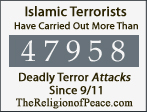Happy KWANZAA to all !
KWANZAA is derived from the Kiswahili phrase "matunda ya kwanza", which means "first fruits of the harvest" which is a depiction of the celebration of harvesting the first crops in traditional Africa.
Kwanzaa is an Afrocentric centered institution that is celebrated by people of African descent in North America, the Caribbean and other parts of the African Diaspora. It was created in 1966 by M. Ron Karenga. The celebration of Kwanzaa is a means for Black people to reaffirm their commitment to themselves, their families, their community, and the black struggle for equality.
There are seven days of Kwanzaa (The Black Cultural Celebration of the holiday season) December 26th thru Jan 1st.
Each day focuses on a specific principle, so there are seven principles.
The Seven Principles
December 26th Unity (Umoja)
27th Self-Determination (Kujichagulia)
28th Collective Work & Responsibility (Ujima)
29th Cooperative Economics (Ujamaa)
30th Purpose (Nia) 31st Creativity (Kuumba)
January 1st Faith (Imani)
The seven principles are collectively referred to as the Nguzo Saba, and are intended to serve as guideposts for meditation and daily living.
The greeting for each day of Kwanzaa is Habari Gani and the reply is Habari Gani followed by the Principle of the day. Kwanzaa also incorporates seven symbols from African Culture that have a significant ritualistic meaning.
The seven symbols are mazao (fruits, vegetables, and nuts), mkeba (place mat, representing as our foundation, our ancestors and our cultural history as a people), kinara (candleholder), vibunzi or muhindi (ears of corn, one for each child in the family), zawadi (gifts, usually made or selected to represent the principle of the day), Kikombe cha umoja (communal cup of unity), and mishumaa saba (seven candles, one lit each day starting with the black in the center on Unity Day, the first red (which are all located to the left) and rotating to the first green on the third day (which are all located on the right) red, green, red, green.
The candles are incrementally lighted, so on the day of Imani all seven candles are burning uniformly.

To see a description of a Model Kwanzaa Ceremony click HERE. Also to read about the Kwanzaa Symbols click HERE . At the time of Kwanzaa, we come together and commit ourselves to work and study for the World liberation of African people now and forever.
Umoja (Unity) To strive for and maintain unity in the family, community, nation and race.
Kujichagulia (Self-Determination) To define ourselves, name ourselves, create for ourselves and speak for ourselves.
Ujima (Collective Work and Responsibility) To build and maintain our community together and make our brother's and sister's problems our problems and to solve them together.
Ujamaa (Cooperative Economics) To build and maintain our own stores, shops and other businesses and to profit from them together.
Nia (Purpose) To make our collective vocation the building and developing of our community in order to restore our people to their traditional greatness.
Kuumba (Creativity) To do always as much as we can, in the way we can, in order to leave our community more beautiful and beneficial than we inherited it.
Imani (Faith) To believe with all our heart in our people, our parents, our teachers, our leaders and the righteousness and victory of our struggle.




























































0 Comments:
Post a Comment
<< Home